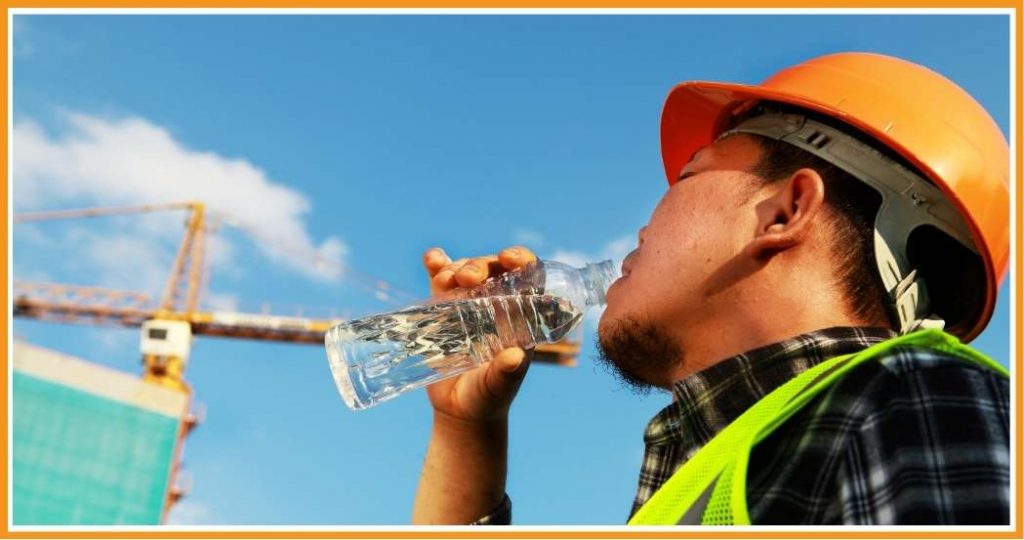Construction heat safety is a critical concern, as it can lead to workplace fatalities and severe penalties for non-compliance with OSHA regulations. Understanding the risks and implementing proper safety measures is essential for protecting workers in heat hazards in hot environments.
Risks of Heat Exposure
Due to the nature of their work, construction workers are particularly vulnerable to heat hazards and heat-related illnesses. Direct sunlight, high temperatures, and physical exertion increase the risk of heat stress, heat stroke, and other heat hazards. Without appropriate interventions, these conditions can lead to severe health complications and even fatal outcomes.

Recent Incidents due to Heat Hazards
Recent incidents underscore the critical nature of heat hazards in the construction industry, such as the case involving SJ&L General Contractor LLC, where a worker succumbed to heat exposure. In this incident, the failure to provide necessary heat protection not only led to a tragic loss of life but also resulted in significant OSHA citations and penalties for the company. Such incidents are stark reminders of the dire consequences of ignoring heat safety regulations and the importance of mitigating heat hazards.
OSHA Regulations and Penalties
As the regulatory authority, OSHA enforces specific regulations to safeguard workers from heat hazards. These include mandates for providing water, offering rest breaks in shaded or cooled areas, and conducting training to recognize and prevent heat-related illnesses. Non-compliance with these standards can lead to hefty penalties, substantial fines, and legal repercussions, underlining the authority and importance of OSHA’s role in ensuring workplace safety.
Various cases have highlighted the ramifications of failing to adhere to OSHA’s heat safety standards. For instance, a construction company faced a $9,000 fine for not offering adequate heat protection to its workers. Such cases emphasize the need for strict adherence to and enforcement of heat safety measures in construction sites to mitigate heat hazards.
STAY HYDRATED
Drink lots of water when working in very hot conditions. OSHA recommends drinking cool water to avoid heat hazards.

STAY COOL
Take frequent rest breaks in shaded or cooled areas to prevent heat hazards.
STAY INFORMED
Train regularly to recognize and prevent heat hazards and heat-related illnesses.
Preventative Measures
Employers should establish a comprehensive heat safety program to mitigate heat exposure risks. This program should include acclimatizing workers to hot conditions, ensuring sufficient hydration and access to shade, and closely monitoring for signs of heat-related illnesses. Additionally, training programs should be developed to educate workers and supervisors about recognizing and managing heat stress, thus bolstering on-site safety.
Employers’ legal obligation is to ensure a safe working environment, which encompasses protection against heat-related hazards. Neglecting these responsibilities can lead to grave legal consequences, including hefty fines and legal proceedings. Thus, compliance with OSHA’s regulations is a regulatory requirement and a critical component of ethical business practices.

Looking Ahead
Looking forward, proposed OSHA standards specific to indoor and outdoor heat safety are poised to impact construction practices substantially. Advocates and policymakers are actively shaping heat safety protocols in the industry through ongoing advocacy and policy changes. Industry leaders must remain informed and proactive in embracing these changes to safeguard workers from heat-related dangers.
Addressing heat safety in construction is an urgent issue that demands concerted efforts from employers, workers, and regulatory bodies. By comprehensively understanding the risks, diligently implementing safety measures, and strictly adhering to regulatory mandates, we can prevent workplace fatalities and safeguard the well-being of construction workers, ensuring a safer working environment for all.







